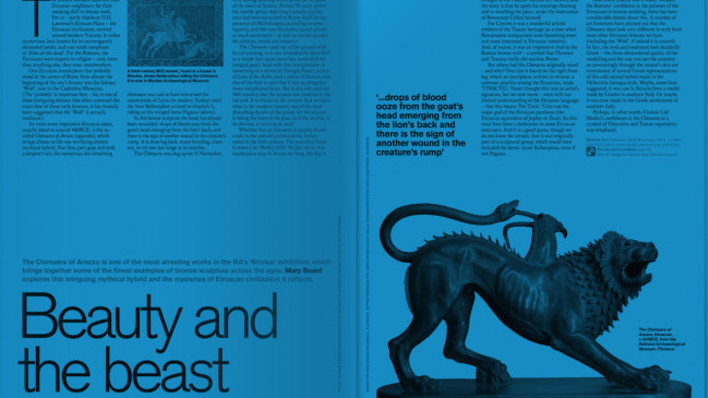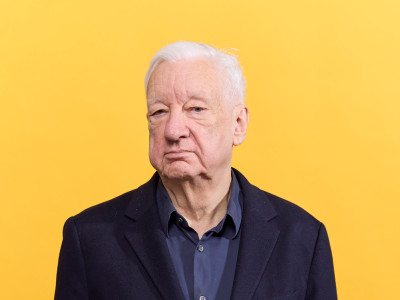
Four artists on their favourite Impressionist paintings in the Ordrupgaard Collection
Published on 28 February 2020
The Impressionists are renowned for their enduring scenes of people and places, whether energetic seascapes or portraits of young women. Four artists – Hughie O'Donoghue RA, Maggi Hambling, Ishbel Myerscough and Mali Morris RA – describe works that resonate with them in our upcoming exhibition ‘Gauguin and the Impressionists’.
Hughie O’Donoghue RA reveals the impact Arles and Vincent Van Gogh had on Paul Gauguin’s style
Paul Gauguin arrived in Arles in the early hours of Tuesday 23 October, 1888. He had come for security, to take up an offer of free board and lodging in return for his paintings. He was to share a small house in Place Lamartine with the painter Vincent van Gogh, sending on pictures to Van Gogh’s younger brother Theo, who was his art dealer in Paris.
Vincent welcomed Gauguin to the house that morning and showed him to his small bedroom, where he had installed two versions of Sunflowers he had recently painted. It is likely that, apart from Vincent’s cleaning lady, no-one else in the world had seen these paintings at this time, but there was no-one else in the world who was better placed than Gauguin to recognise what he was looking at. To know what he thought about Van Gogh’s paintings we need only to look at his painting Blue Trees. Your Turn Will Come, My Beauty! (1888). The painting is made on the jute sackcloth that Gauguin sourced for the two painters after he arrived in Arles.

Blue Trees, (Your Turn Will Come, My Beauty!), 1888

Landscape at Pont-Aven, 1888
If we look at the painting that Gauguin made slightly earlier that year, Landscape at Pont-Aven, although very close in subject, composition and form to Blue Trees, it appears to be almost from a different age. There is an abrupt change in style and manner in the Arles painting, most notably in the non-naturalistic colour used in particular in the sky, trees and path. This was certainly a response to Van Gogh’s work, but also a fundamental change in direction that would be long lasting, not just for Gauguin but for other modern artists to come.
In the Pont-Aven painting we are still looking ‘in’ to the picture, as if looking at an image viewed through a window – a convention in place since the early Renaissance. The colours, however beautiful, are subservient to the illusion of depth and receding space. In Blue Trees, however, we are compelled to look ‘at’ the picture, not into it. The colours are flatter and announce the picture as a ‘thing’, an object, not an illusion.
Van Gogh’s achievement in 1888 was astonishing. In eight months in Arles this lonely, dishevelled, rambling, dysfunctional alcoholic had taken on the Western tradition in painting – and won. We cannot know what Gauguin thought when he awoke to his own private view of Van Gogh’s Sunflowers, but we can see the effect in his paintings. As Gauguin wrote to his friend Emil Schuffenecker earlier that month, "In art I am always fundamentally right".
—
Hughie O’Donoghue RA is a painter. His work is held in numerous national and international public collections

Maggi Hambling on Daubigny and Courbet’s roaring seascapes
In Seascape, Overcast (1874) by Charles-François Daubigny, the sea and sky extend way beyond the edges of the painting towards infinity. And yet the inner energy of the whole is powerfully contained. Our eyes constantly travel back and forth, between the far horizon where sea meets sky, to the water immediately in front of us, where our footing feels uncertain.
Waves approach, clouds manoeuvre and time, amidst all this action, is suspended. The painting speaks of a vast eternity. How miniature and transient are our lives by comparison.
Gustave Courbet juxtaposes his three elements – sea, sky, land – in a typically confrontational way in his painting The Cliffs near Etretat (1869). The solidity of the cliffs is being challenged by those huge aggressive waves and the sky above holds menace. His sublimely physical handling of paint has always made me feel present at the drama. It is as if the painting is happening right there in front of me.
Someone once told me a saying of Courbet’s that I love: "I try to paint the sound of a deer as it comes through the forest". In this work the roar of the sea is so loud it fills the air and the smell of it fills the nostrils. All our senses are involved, aroused and seduced.
—
Maggi Hambling is a painter and sculptor. Her work is on display in the survey show ‘A Walk Through British Art: 60 Years’, at Tate Britain, London, until 17 May

Ishbel Myerscough on Berthe Morisot’s portrait of female vulnerability
At first glance, this painting by Berthe Morisot from 1885 is a delicate, feminine, elegant portrait of a young woman outside, seated on the grass. Looking closer, there is no blanket. Her hat is not shading her face as one feels it should. It is pushed back, but prim and societally acceptable. The woman is obviously young, not much more than a girl. We are drawn to her slim body with slight waist in a red bodice; we can’t see her hands resting in her white skirt. Her bust is pushed up, but not full. She doesn’t smile or look sad, but looks past the viewer, dreamy, elsewhere. Just behind her is a birdcage, sat on slightly up-tilted grass. I have kept birds; they are rarely put on the ground, especially outside and out of reach. Even in their cages they would be too vulnerable there.
Women have endlessly been referred to as "birds". My friend, exhausted by her teenage daughter’s frustrations, said to me, "It’s like sitting next to a beautiful bird in a cage". My uncle called me "ducky". In Glasgow, I was ‘hen’. In my youth I was told by a friend’s mother that "young women should eat like sparrows".
Young women are seen as fragile and to be protected, in a universal understanding of their vulnerability. Yet they are desperate to fly, to be as liberated as anyone. They’re aware of their power, but also scared by it. Unsure as to what the dangers are, they can feel cat’s eyes in the long grass. In this charming, calm work, Morisot creates a subtle subversion. She seduces the viewer with beauty – blurring the lines between the interior and exterior, highlighting the importance of fashion and the way light is captured – to make an important comment on female existence.
—
Ishbel Myerscough is a painter. Her exhibition ‘Grief, Longing and love’, at Flowers Gallery, London, runs 4 March–11 April

Mali Morris RA on the painterly intimacy of a late still-life by Manet
In the last two years of his life, when Manet was in failing health, he produced many small works – flowers in vases, vegetables, fruit; single forms, placed centrally. I love their scale and painterly intimacy. The ambitions and complexities of his paintings have now been reduced and distilled into a new kind of still-life, tender love letters to familiar things, which in their singular presence become vehicles for touch, colour, and contemplation. They are very different from his great and radical masterpieces, but in some ways are as ground-breaking, and as unexpected.
The basket here is held in a paint-space of softly brushed warm grey. There is no depiction of table or room. The yellowy-green pears, with some red/brown at their tips, are similarly nestled inside a surrounding colour, a dark blue-green. The two rows of vertical brushstrokes in the same green are quickly painted below the pears, and describe the dark interior of the basket – it’s mysterious to me, this inside-out depiction; haptic and illusionistic, its curving rhythm animating a taut surface.
Suddenly I’m looking at the catalyst that sparks this colour chord into life, the delicious pink strokes on the wicker rim and left edge of the basket. They nod to the glimpses of pink that come through the green of the pears, and where the grey ground doesn’t quite reach the edges and corners of the canvas. They take me to the stroke of the lightest colour of all, beneath the basket, where normally we would find a shadow. These relationships seem as precise in their feeling as the touch appears casual. I marvel at what Manet does – I feel present in the moments when he painted, and also in the exact time of my looking.
—
Mali Morris RA is Professor of Painting at the RA Schools. Her works are on view at Blyth Gallery, London, 18 March–1 May, and Randan Stables Gallery, Hay-on-Wye, 21–31 May


Gauguin and the Impressionists: Masterpieces from the Ordupgaard Collection is in The Gabrielle Jungels-Winkler Galleries from 29 March – 14 June 2020. Exhibition organised by Ordrupgaard, Copenhagen and the RA.

Enjoyed this article?
As well as free entry to all of our exhibitions, Friends of the RA enjoy one of Britain’s most respected art magazines, delivered directly to your door. Why not join the club?
Related articles

5 of the best uses of colour in art and culture
18 September 2024

Michael Craig-Martin: living colour
28 August 2024
